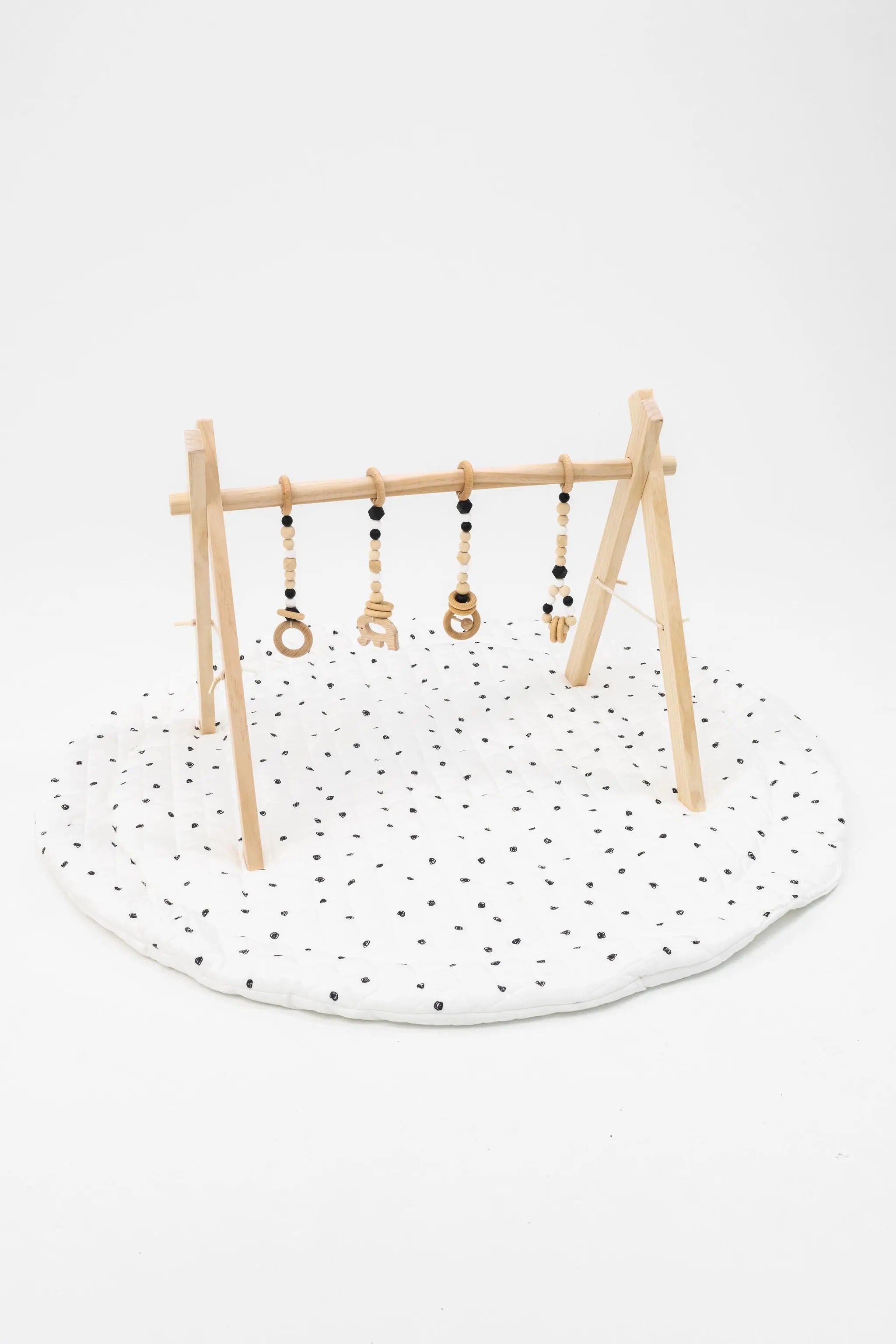What to Know Before Buying a Baby Play Mat: Features, Safety, and More
What to Know Before Buying a Baby Play Mat: Features, Safety, and More

A baby play mat is one of the first things many parents add to their home. It gives babies a soft space to lie down, move, and explore. Whether you’re doing tummy time or just letting your baby kick around, a play mat can help with comfort and development.
There are many kinds of baby play mats, so it helps to know what they are used for and what to look for when choosing one.
What Is a Baby Play Mat?
A baby play mat is a soft, padded surface made for babies to lie or sit on. It’s often used during playtime, tummy time, or while your baby practices rolling and crawling. Most mats are made from foam, fabric, or a mix of both. Some have built-in textures, mirrors, or high-contrast colors to catch a baby’s attention.
Play mats can be foldable, waterproof, or machine washable, depending on the material. Some are simple flat mats, while others are activity mats with toys attached.
Benefits of Using a Baby Play Mat
Even a simple mat can support a baby’s growth. Here’s how:
1. Tummy Time Support
Tummy time is important for building neck, back, and shoulder strength. A baby play mat gives your child a clean and soft space for this activity. Some mats include small pillows or toys to make tummy time more enjoyable.
2. Encourages Movement
From kicking to rolling over, movement is part of early development. A soft mat makes it safer for your baby to try these new skills without hurting themselves.
3. Visual and Touch Stimulation
Play mats often come with bright colors, patterns, and different textures. These small details help babies learn by looking and touching.
4. Safe Play Area
Hard floors can be uncomfortable or unsafe. A padded baby play mat creates a clean and gentle area where babies can move around freely.
Types of Baby Play Mats
There are different types to suit different needs:
1. Foam Mats
These are soft, thick, and often come in puzzle pieces. They’re easy to clean and great for covering larger floor areas. Foam mats are usually water-resistant and can be wiped clean quickly.
2. Fabric Mats
These mats are thinner and often machine washable. Many come with extra features like crinkly fabric, soft toys, or textures. They’re good for babies who like to explore with their hands.
3. Activity Mats
Activity mats often include hanging toys, mirrors, or musical features. These mats combine a soft surface with built-in entertainment for young babies.
4. Foldable Mats
For small spaces or travel, foldable options are helpful. These can be folded away when not in use and are often lightweight.
Things to Consider When Buying
Here are a few things to think about before choosing a baby play mat:
1. Material
Look for mats that are non-toxic and free from BPA, PVC, or phthalates. Babies spend a lot of time on the mat, and safe materials matter.
2. Size
Choose a mat size that fits your space and gives your baby room to move. If you plan to leave it out all day, a larger mat might work. If you want to put it away often, a smaller or foldable mat is better.
3. Ease of Cleaning
Babies spit up, drool, and have diaper leaks. A mat that can be wiped down or tossed in the washing machine makes cleaning much easier.
4. Thickness
Thicker mats offer more padding, especially on tile or hardwood floors. If your home has softer flooring, a thinner mat may be enough.
5. Design
Some mats have soft colors that match your home decor. Others use bright, high-contrast designs that grab a baby’s attention. Pick one that fits your space and your baby’s needs.
How to Use a Baby Play Mat Safely
Keep these safety tips in mind:
Flat Surface Only: Always place the mat on a flat floor, never on beds, couches, or uneven surfaces.
Supervised Play: Never leave your baby alone on the mat, especially if they are very young or starting to roll over.
Clean Regularly: Wash the mat often to keep it free from germs or allergens.
Check for Wear and Tear: Over time, some mats may tear or lose padding. Replace mats that are no longer safe.
When Can You Start Using One?
You can start using a baby play mat from birth. At first, your baby might just lie still and look around. Over time, they’ll start kicking, rolling, or pushing up during tummy time. As they grow, the mat becomes a familiar space where they can move more freely.
Most babies enjoy their play mat up until they start crawling and exploring more of the home. After that, some families keep the mat for comfort or extra padding during play.